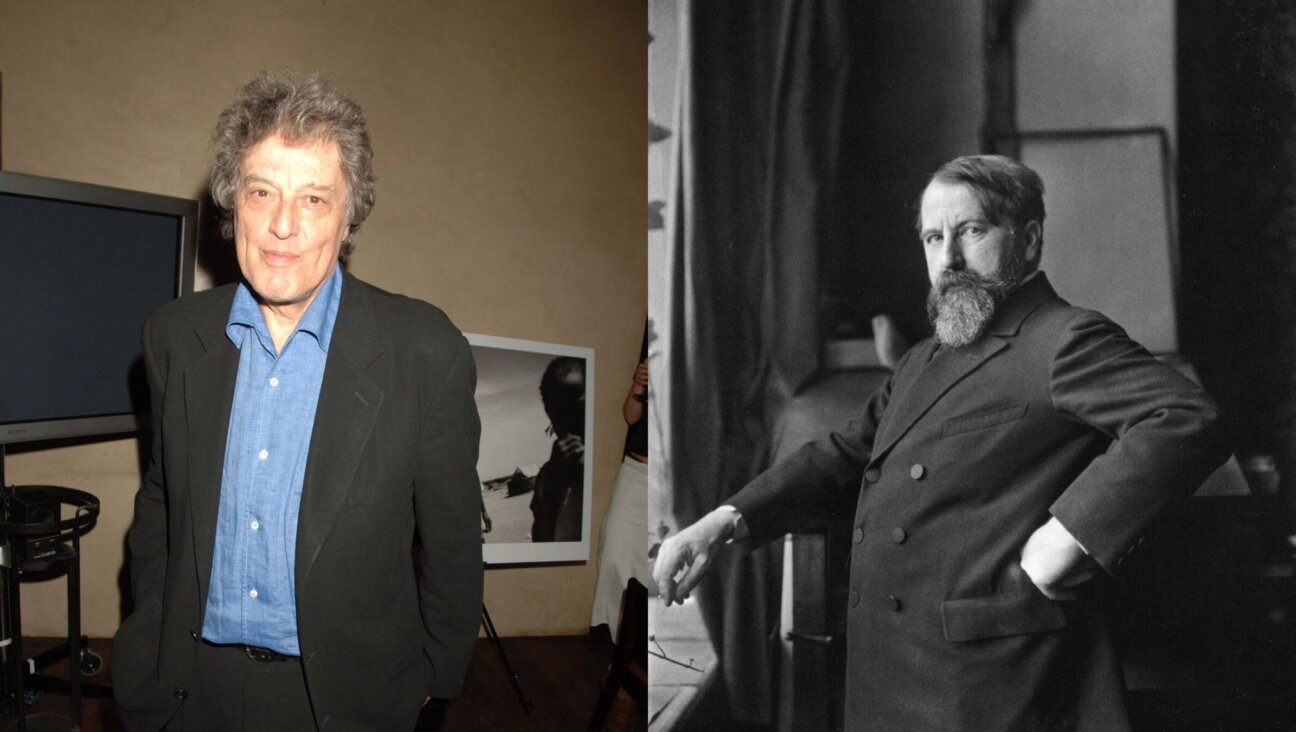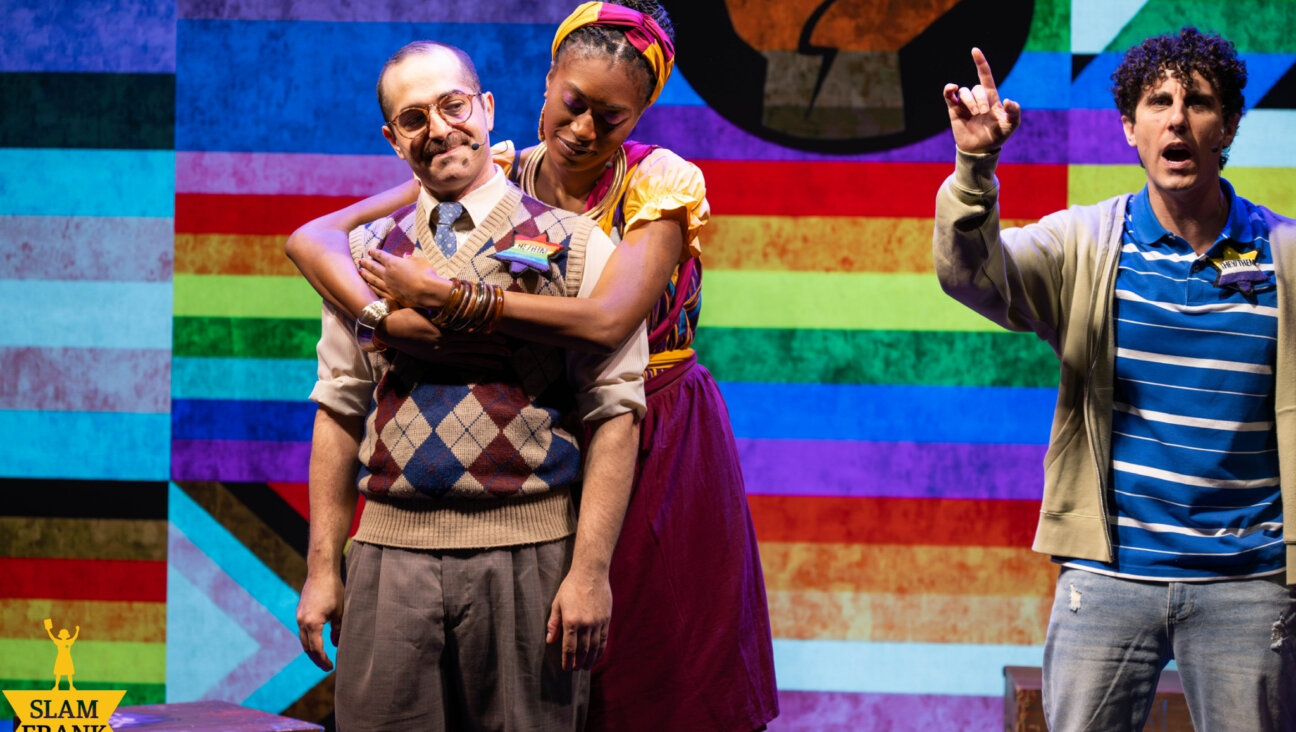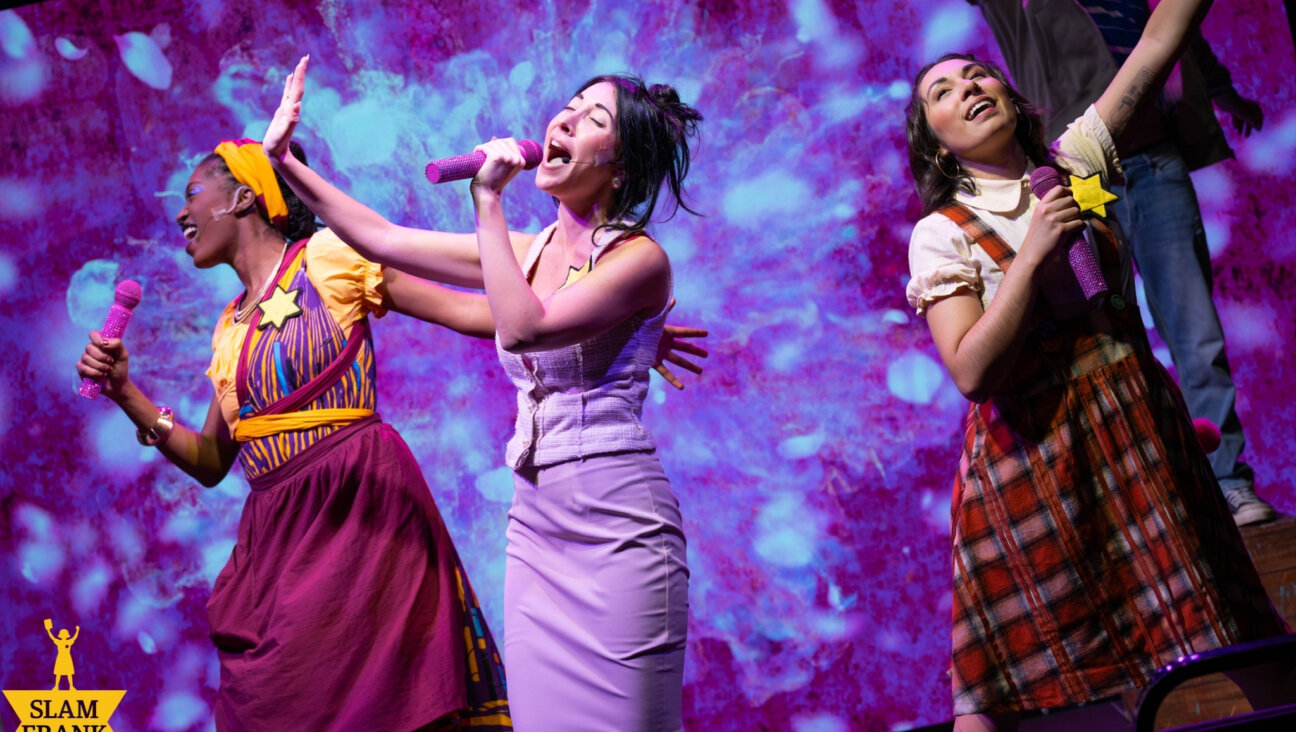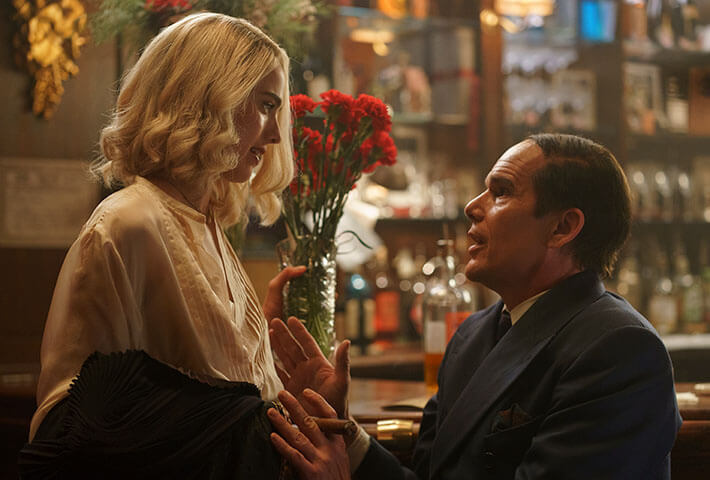America’s First All-Yiddish ‘Fiddler’ Is A Perfect, Bittersweet Portrait Of Jewish Joy

Graphic by Angelie Zaslavsky
I was sick for my latest birthday, sniffly and feverish, yet I somehow found the wherewithal to force my gathered friends to watch the scene from “Fiddler on the Roof” in which the furious ghost of Frume Sarah rises from the grave. You know the one. Tevye, trying to convince his wife Golde to approve of their eldest daughter’s engagement to the tailor she loves, rather than a wealthy butcher, invents a dream in which the butcher’s late wife threatens death and destruction if her husband weds again. Over a grainy video from the 1971 film, in which Ruth Madoc’s Frume Sarah whirls and screeches, I felt an uncommon glee. Frume Sarah is terrifying, the witch who spooked my childhood. I love her.
And how much more I loved her as Frume Sore, screeching in Yiddish instead of English, in the National Yiddish Theatre Folksbiene’s “Fiddler on the Roof,” the first all-Yiddish production of the classic musical to grace an American stage. (The translation comes courtesy of Shraga Friedman.) The Folksbiene’s Frume Sore is played by two people, rather than one: Jodi Snyder, as goth-glam a ghost as ever tormented a dairyman, sits atop some anonymous soul’s shoulders for the role, making Frume Sore quite literally larger than life. She’s hilarious and scary, ludicrous yet somehow absolutely convincing. If she visited your dreams, you wouldn’t let your daughter marry Leyzer-Volf, either.

This — but pre-ghost. Image by Victor Nechay / ProperPix
Yet Frume Sore is also a succinct embodiment of the many merits of the Folksbiene’s production, directed by the Broadway legend Joel Grey and choreographed by Staś Kmieć, with music direction by Zalman Mlotek. “Fiddler on the Roof” is a weird musical, one in which joy predominates despite the constant presence of desperate poverty and the only slightly less consistent threat of violence at the hands of Cossacks. No character better embodies that strange balance than Frume Sore, who, despite being dead, at risk of losing her precious pearls and vengeful to the point of murder, seems to have, well, a ton of fun haunting Tevye and Golde. As conjured by Tevye, Frume Sore may be confronting a matter of life and death, a true reckoning with a threat to identity, but she has a great time doing it.
That attitude pervades the show. Life is rough, frequently terrible, yet Tevye, played by Steven Skybell, jokes with God with apparent earnestness. His humor doesn’t seem to be a mask for bitterness, or even a coping mechanism. To Tevye, a belief in God goes hand-in-hand with a belief in humor, and “Fiddler on the Roof” is clearly on his side. Under Grey’s direction, the yeshivniks who correct Tevye’s loose and often wrong attempts at quoting Torah are rigid to the point of ridiculousness. In the late song “Der Klang,” or “The Rumor,” Anatekve’s Jews treat the spreading of an increasingly exaggerated rumor about Tevye’s family as excellent communal entertainment, warping the truth willfully but not maliciously. In Anatevke, Judaism is about study and struggle and tradition, but also about pleasure.
The current relevance of “Fiddler on the Roof” is apparent, and registers with new immediacy in the age of Trump. The constable who makes a show of friendship to Tevye whilst brutally enforcing discriminatory edicts against the Jews takes on a fresh meaning; what’s scariest about him isn’t his cruelty, it’s his complete refusal to call things what they are. And the end of the show, in which Anatevke’s residents, forced from their homes, have no choice but to hope faraway countries will accept them, is a sharp rebuke to the coldness toward immigrants and refugees that has tainted our contemporary world.
But “Fiddler on the Roof,” I found, makes its most unique point about the less obvious subject of happiness. At the play’s end, as Anatevke’s Jews disperse — to Jerusalem, Chicago, Krakow, etcetera — Tevye holds to his jokes, but their tone has changed. They are determined, not organic. There is a great tragedy at hand: The forced abandonment of home, ancestors, community. But a smaller tragedy is happening too: The pleasure is going out of Jewish life. From the perspective of history, a perspective that Joseph Stein, Jerry Bock and Sheldon Harnick had when they penned “Fiddler on the Roof” in the early 1960s, that small tragedy appears great. The decades after Tevye’s exodus would be increasingly unkind to his ilk, and fatal to many of them. It would be a long time before Jews, as a group, would regain even a shade of the shared joy in daily life that “Fiddler on the Roof” depicts. Is that an accurate depiction? Probably not. But it brilliantly clarifies part of the sense, pervasive in American Judaism, that something essential has gone missing.
For that reason, a “Fiddler on the Roof” in Yiddish makes particular sense. The language of the lost world, bountifully expressive, is the appropriate framework for a show that revives a little-commented upon feature of that world. Through the efforts of the Folksbiene and its fellows, Yiddish is experiencing something of a contemporary resurgence. Perhaps other good things will follow in its wake. As Tevye and Golde do to ward off the evil eye: Spit thrice.

















